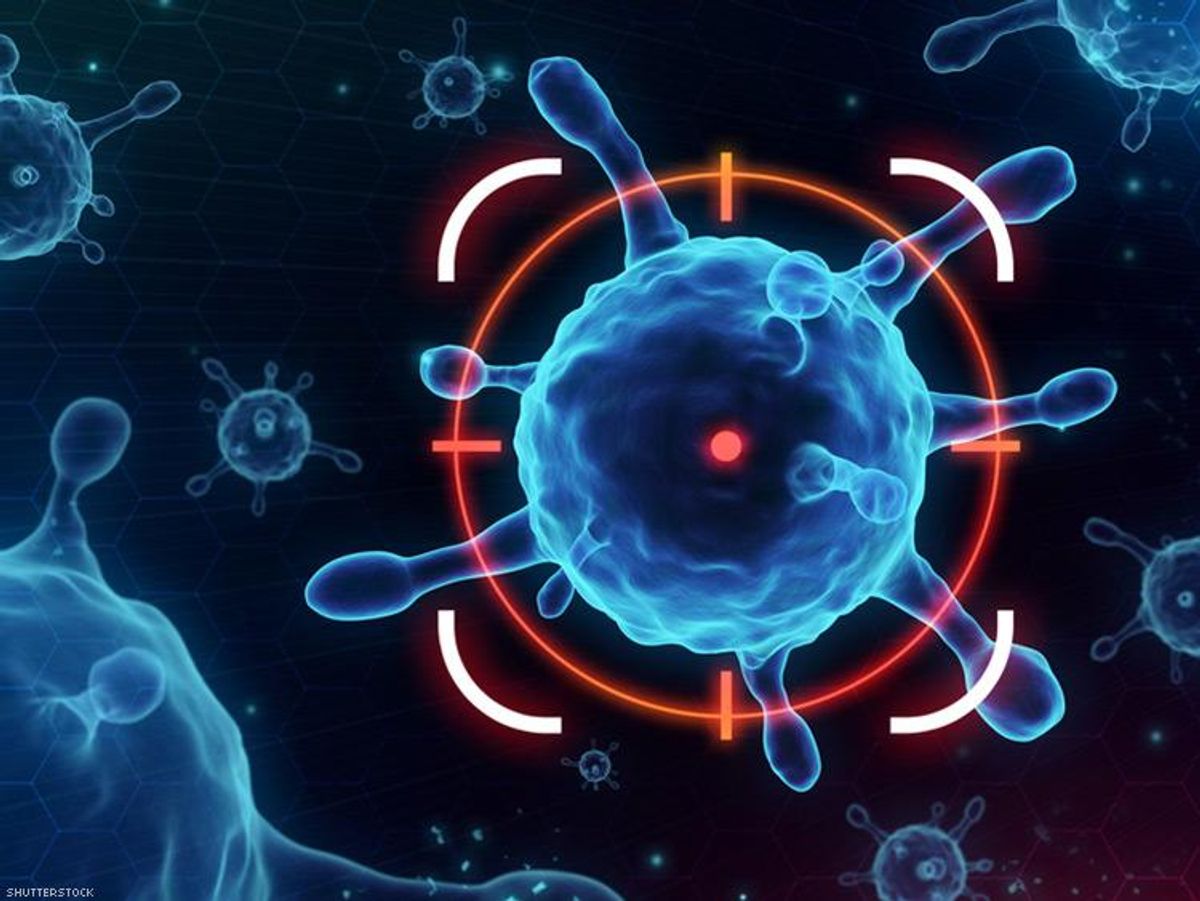The Cure
New Treatment Method Might Lead to Eradicating HIV

Researchers have found an enzyme that targets and "wakes" inactive HIV hiding in reservoirs, which might be the last step towards finding an HIV cure.
May 17 2017 5:00 AM EST
By continuing to use our site, you agree to our Privacy Policy and Terms of Use.

Researchers have found an enzyme that targets and "wakes" inactive HIV hiding in reservoirs, which might be the last step towards finding an HIV cure.
Researchers believe they have found a new method to execute the “shock and kill” strategy aiming to eliminate HIV hiding in viral reservoirs inside our own T cells.
This is incredible news. Here’s why:
Even though an HIV-positive person on antiretroviral therapy is able to suppress the virus to undetectable levels, which makes it impossible for them to transmit the virus, HIV still hides inside reservoirs found within a certain amount of affected T cells — they’ve been hiding there since early stages of transmission.
You may not know this, but antiretroviral therapy cannot eliminate these hidden HIV cells, but it can make them dormant, or inactive. When a person stops taking their meds, the HIV that’s been hiding in these reservoirs all this time will sneak out and spontaneously reactivate, thus rekindling its prior task of destroying T cells.
But, scientists at Gladstone Institutes have now discovered an enzyme called SMYD2 that could be a new way of flushing out HIV hiding in reservoirs. If this were to happen, an HIV cure could be the next step!
The “shock and kill” strategy, which is a method to wake up hidden HIV, and act with the body’s own immune system to eliminate the virus and kill other infected cells housing more reservoirs, has been the largest barrier in finding a cure.
The study, which was published in Cell Host & Microbe, focused on a class of enzymes called methyltransferases. Researchers screened over 50 of them to see which ones can suppress the hidden HIV found in affected T cells.
Turns out, scientists found that by inhibiting an enzyme called SMYD2, they reactivated (or “woke up”) the inactive HIV hidden in reservoirs, thus showing that SMYD2 can be used as a therapeutic target in the “shock and kill” strategy.
It’s also reported that pharmacological inhibitors are already being developed against SMYD2 due its effect on various cancers. Given that HIV treatment and cancer share similar pharmacological targets that locate infected cells (like SMYD2), it’s not far off to assume that one day HIV and cancer treatment will be very similar in the future.
“Our findings offer new biological and mechanistic insights into how latency functions,” explained Melanie Ott, MD, PhD, a senior investigator at Gladstone and lead author of the study. “They also suggest potential translational applications. Through a valuable collaboration with our industry partners, we obtained samples of small molecules in pre-clinical development that target SMYD2 and could potentially activate latent HIV… Our findings provide the basis for a new model of HIV latency wherein SMYD2 contributes to durably repressing the latent virus. They also underscore the emerging ties between cancer and HIV treatment through shared pharmacological targets. Though we are still far from a human application, it is exciting to know that data from this study might readily connect with clinical efforts.”
This particular study was in collaboration with Warner Greene, MD, PhD, and was partially funded by amfAR, the Foundation for AIDS Research’s Institute for HIV Cure Research, an initiative aimed at finding a broadly applicable cure for HIV by 2020.
Recently, another HIV reservoir breakthrough focused on an antiviral molecule called ABX464, patented by the biotechnology company Abivax, which recently finished Phase II clinical trials where it drastically reduced the number of reservoirs.
After treating 30 HIV-positive participants in Spain, Belgium, and France who were then put into two groups (the majority was treated with ABX464 while the rest were given a placebo, in addition to their antiretroviral treatment), researchers saw a decrease of total HIV DNA.
Half of the participants treated with ABX464 in the study saw a reduction of over 25 percent, while those treated with the placebo saw no response.
“Currently approved drugs can effectively reduce and control the replication of the HIV virus in humans, allowing many patients to live with chronic treatment,” Dr. Jean-Marc Steens, chief medical officer at ABIVAX, said in a statement about the ABX464 study, “but no drugs have been able to eradicate the virus in humans because it evades therapy by hiding in what have been called by the scientific community ‘HIV reservoirs.’ These results in [HIV-positive people] are a first and very important step in supporting the hypothesis that ABX464 could impact the HIV reservoir.”